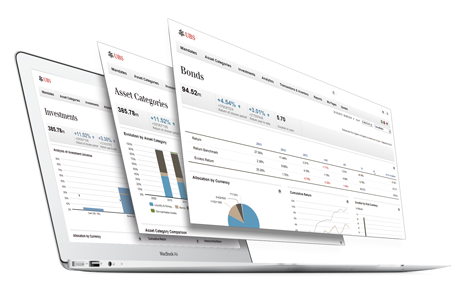How to Assess the Performance of Your Portfolio
Post on: 28 Март, 2015 No Comment

Posted in Investing by Mark Cussen
March 31, 2008 11:11 PM — 1 Comments
When markets are down or sluggish, it’s easy to feel that your mutual fund is under-performing. Before assigning a term like under-performing to a fund, you should take many factors into account. If your fund is down enough to worry you, it’s a good idea to call your financial advisor with some key questions.
1. Should you be in the fund in the first place?
2. How is the fund performing relative to other funds in its peer group?
3. How is the fund performing relative to its appropriate benchmark?
Most mutual funds impose certain requirements that can limit a portfolio managers’ investment options. For example, if a stock fund requires 80% of its portfolio assets to be invested in stocks, the portfolio manager might not be able to allocate more than 20% of assets to bonds or cash, even in a bear market. Because of this, a reasonable standard for measuring mutual fund performance might be to consider how the fund’s performance compares to the overall performance of an appropriate index (appropriate is the key word here). If your fund consists of bonds, you will not want to compare it to the Dow Jones Industrial Average. Even for some stock funds (such as those with small-company stocks or international company stocks), the Dow might not be an appropriate comparison.
4. Are there any extenuating circumstances to explain the under-performance?
For example, there could be reasons why you wouldn’t want to place too much weight on short-term performance; especially if the economy as a whole has experienced a down-turn in production. Perhaps you bought a fund that has performed poorly in the past, but you also believe that a new management team will turn this around in the near future.
This factor is particularly important to remember after a decade like the 1990’s, where increasing annual returns were achieved by many. In view of this, you might want to consider whether your expectations are realistic. Before you cash-in your under-performing shares, you may want to determine the factors that are driving the performance of your funds.
5. What fees are you incurring each year?
It goes without saying that investment management, distribution, and administrative fees charged by your fund can have a significant effect on your overall return, and these fees can vary greatly from fund to fund. Do you know what your fund investments are costing you? Do you know if the fees charged by your fund are competitive with the fees charged by similar funds? If you don’t, now might be a good time to check into this.
6. Are your mutual funds tax-efficient?

Many investors haven’t heard of tax efficiency, but it’s a term you might want to be familiar with, because it could affect your total return. A tax-efficient investment is one that can be reasonably expected to produce favorable tax consequences. For example, a 401(k) or variable annuity, whose taxes can be deferred, might be considered tax-efficient. A municipal bond fund, whose income is usually exempt from federal and state taxes, might also be considered tax-efficient (however, municipal bond funds seek income that is federally tax-free, a portion of the fund’s returns may be subject to federal, state, and local tax and the alternative minimum tax). While these examples are fairly straightforward, the concept of tax efficiency becomes more difficult when applied to other types of mutual funds.
One element of a fund’s tax efficiency is its portfolio turnover rate, which is typically published in the fund’s annual and semiannual shareholder reports and/or prospectuses. Essentially, this figure represents how much trading activity occurred in a mutual fund’s portfolio over a year. It is generally considered by many to be a good indicator of a fund’s tax efficiency, because when portfolio managers buy and sell securities often, shareholders might pay more federal income taxes if these trades yield profit. Remember, even if you don’t sell your shares, you usually pay taxes on distributions paid to you by the mutual fund itself (even if re-invested).
On the other hand, a problem with the portfolio turnover rate is that it doesn’t reflect the type of selling activity. It doesn’t tell you whether securities were sold at a gain (which could result in a capital gains distribution), or a loss (which would result in no additional taxation, and could even be used to offset capital gains). It also doesn’t tell you whether capital gains were long-term or short-term in nature, which is important because capital gains are taxed differently based on how long the security was held.
If you want to look at another measurement tool of a mutual fund’s tax efficiency, you can also look at its tax-efficiency ratio. This ratio is calculated by dividing a fund’s tax-adjusted return by its pre-tax return. The result is the percentage of total return that the average investor keeps after taxes—so the higher the ratio, the more tax-efficient the fund has been.
However, the difficulty is that not all mutual funds publish this ratio. Please carefully consider investment objectives, risks, charges, and expenses before investing. For this and other information about any mutual fund investment please call the funds provider to request a prospectus. Please read it carefully before you invest.
Related Posts:
(2 votes, average: 3.00 out of 5)














